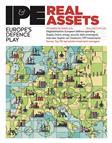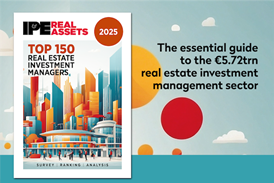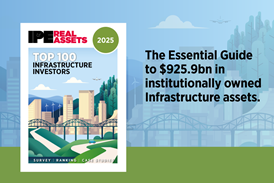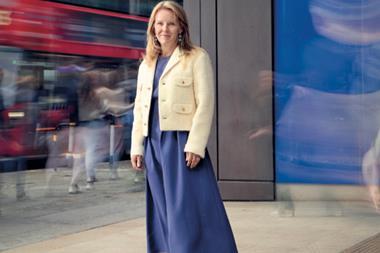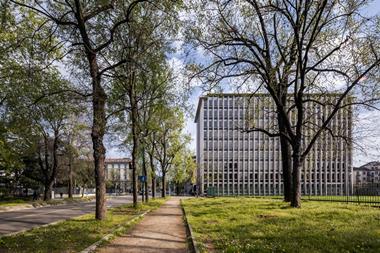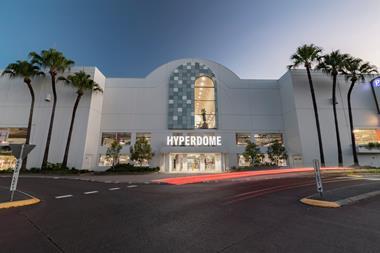Two organisations merge to make headway with a standardised set of metrics. Pirkko Juntunen reports
Global Real Estate Engagement Network (GREEN) and Leaders Of The Urban Future (LOTUF) are teaming up to create a US$4trn (€3.8trn) network focused on increasing climate-risk management and lifting systemic barriers that obstruct real estate investors’ decarbonisation journeys.
GREEN’s existing efforts, in which indirect investors engaged listed and non-listed real estate funds and companies on their climate-risk management performance, will now be complemented by a newly created workstream based on LOTUF’s earlier work, where indirect and direct real estate investors worked together to promote transparency and consistency in financially material climate-risk metrics.
Maaike Hof, co-CEO of GREEN, says: “Science has shown that green premiums and brown discounts exist in most real estate segments and geographies as a result of tenant demand and investors’ risk and opportunity perception.”
However, a lack of insight into specific climate risk metrics forces asset owners, managers and tenants to rely on more holistic sustainability certifications and ratings, Hof notes.

“These broader assessments are not always accurate proxies for financially material climate risk and opportunity. By promoting access to specific climate performance metrics, asset owners and managers can better assess their risks and opportunities. This transparency will also incentivise investment in improving energy and carbon performance, ultimately reducing future physical risks,” she says, adding that joining forces creates a stronger voice.
“We are now working with both indirect and direct institutional real estate investors. They all find it very important to have access to meaningful metrics in order to make informed decisions from a risk-management perspective. As a side effect, making sure that we are focusing on the key metrics will also simplify and reduce the ever-increasing reporting burden that investors face,” she notes.
Mikkel Bülow-Lehnsby, co-founder and chair of Urban Partners, a real estate and built environment investment platform and co-founder of LOTUF, adds: “Linking financial value – such as green premiums and brown discounts – directly to carbon and energy performance is crucial for driving decarbonisation. When asset owners and managers increase focus and disclosure on a few specific climate metrics, it will create a tipping point in the real estate supply chain. Suppliers will respond by prioritising cost-efficient solutions that outperform against these quantitative measures.”
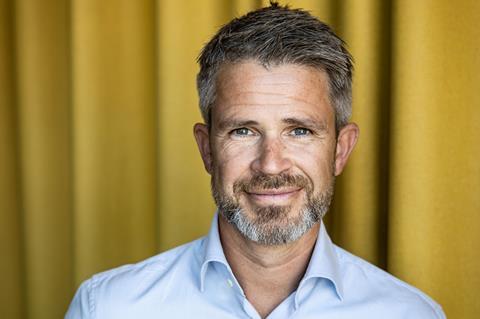
“Linking financial value – such as green premiums and brown discounts – directly to carbon and energy performance is crucial for driving decarbonisation”
Mikkel Bülow-Lehnsby
Uniform metrics
Hof expresses optimism about the initiative’s growth: “Over the next year, we hope that more leading asset owners and managers will commit to consistently disclosing and acting on a set of financially material climate metrics. If leading global institutional investors align on a standardised set of metrics, it will pave the way for universal adoption, enabling better decision-making and further driving green premiums and brown discounts.” And this, she notes, “is also beneficial for all real estate investors wanting to prevent the worst consequences of climate change”.
Hof emphasises that the key starting point is getting consensus among leading institutional investors about the specific metrics. “We will engage and work with industry bodies, certification and data providers, and other stakeholders close to the investment community. It is important that these metrics are widely accepted by the industry in order for them to be widely used,” she stresses.
Bülow-Lehnsby says: “Science has clearly defined what is needed for a sustainable future, and it is inevitable that governments will regulate sooner or later. We want this regulation to be simple and focused on a few relevant key metrics. We hope our efforts will help shape future standards and help investors to be prepared without being prescriptive.”
Bigger global reach
Both Hof and Bülow-Lehnsby agree that to achieve global reach, they will have to continue growing the network’s membership and urge investors to join the effort. They are currently making a push to get more Australian and Asian members on board. Currently, GREEN members are roughly equally divided between Europe and North America. The pushback on climate change efforts by the current US administration has so far not had any negative effects on membership numbers from the US.
Hof states that, since the focus is on financial metrics and transparency, no major concerns have been expressed so far.
“What we have always focused on makes financial sense, and what we are pushing for is transparency and risk management. Any investor will want transparency because it helps in decision-making,” she notes, explaining that difficulties may sometimes arise when an issue is perceived as not financially material. “Our argument, however, is that we are focusing on issues that are financially material, at the very least in the long term.”
Bülow-Lehnsby adds that the aim is not to moralise or prescribe in detail what market participants should do. “We just want consistency of measurement. It is up to every actor to decide what makes financial sense for them,” he concludes.
The new combined entity is expected to be operational by end-February. It will continue to be called GREEN and remain headquartered in Utrecht, the Netherlands, with LOTUF incorporated in a workstream within GREEN.
Green at a glance
GREEN was launched by Finance Ideas, in collaboration with professors Piet Eichholtz from Maastricht University and Kees Koedijk from Utrecht University in September 2021.It is backed by seven mid-sized Dutch pension funds. Funding from Laudes Foundation has ensured rapid expansion, with some of the largest global investors joining at the beginning of 2022. GREEN’s members include APG, MN, Pensioenfonds Detailhandel Trillium Asset Management, Bouwinvest, Schroders, CenterSquare Almazara and asr. Through coalitions, GREEN aims to steer real estate companies – both listed and non-listed – to improve their sustainability performance and reduce their exposure to financial and non-financial climate risk.
Lotuf at a glance
LOTUF was launched in 2022 as an investigative effort to find out if the idea of carbon measurement standardisation was plausible. It is an investor-led project to help accelerate the
decarbonisation of institutionally owned real estate, building on existing sector efforts by Systemiq, a real estate consultancy, and a group of real estate investors. The goal was to define what investors meant by low-carbon real estate and agree on principles that would progress decarbonisation. Current funders include ATP, BlackRock, HOOPP, Ivanhoé Cambridge, NBIM, Pictet, and Urban Partners.

